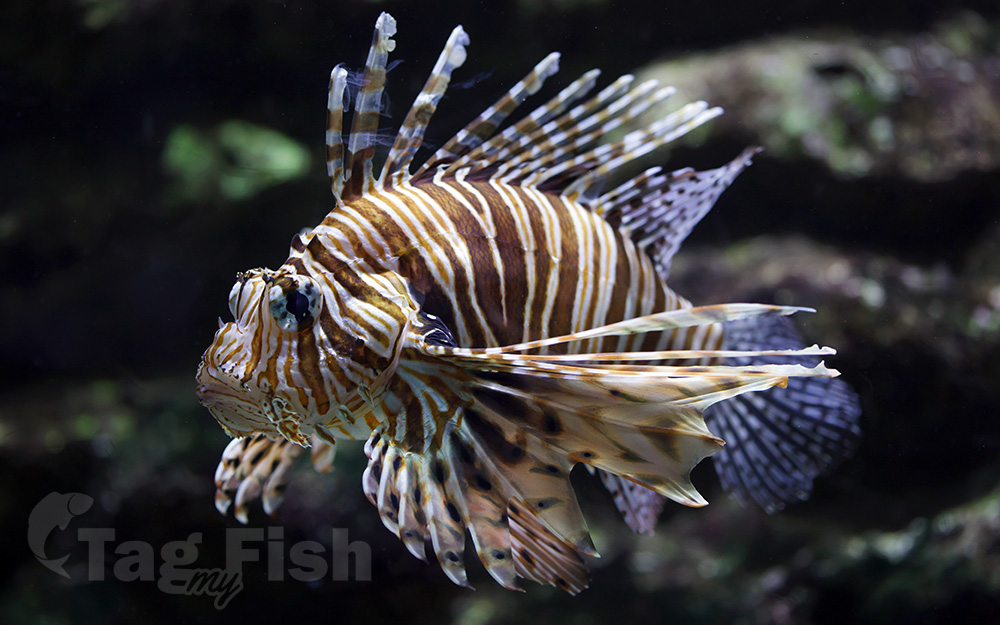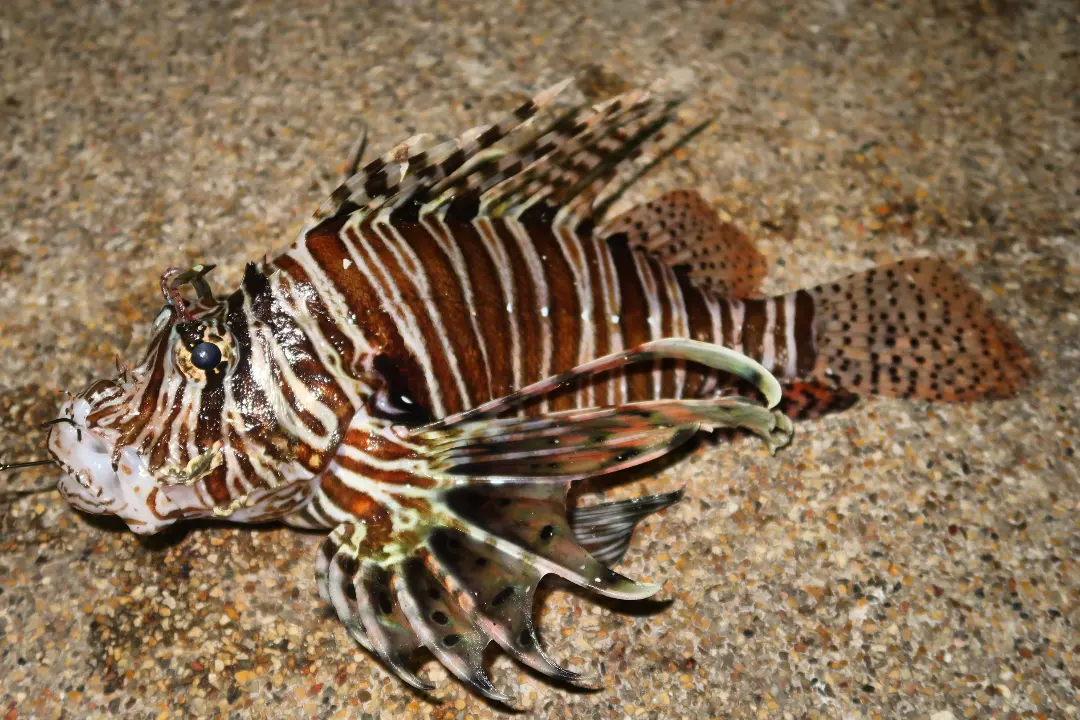Red lionfish
(Pterois volitans)

Classification
General data
The red lionfish (Pterois volitans) is a venomous coral reef fish in the family Scorpaenidae, order Scorpaeniformes. It is mainly native to the Indo-Pacific region, but has become an invasive species in the Caribbean Sea, as well as along the East Coast of the United States and East Mediterranean and also found in Brazil at Fernando de Noronha.
P. volitans and a similar relative, Pterois miles, have both been deemed invasive species.
Red lionfish are clad in white stripes alternated with red, maroon or brown stripes.
Adults in this species can grow as large as 47 cm (18.5 in) in length, making it one of the largest species of lionfish in the ocean, while juveniles are typically shorter than 1 inch (2.5 cm). The average red lionfish lives around 10 years.
As with many species within the family Scorpaenidae, it has large, venomous spines on its dorsal fin (13) as well as other venomous spines on its pelvic fins (2) and anal fins (3). It is these fins together with the other long non-venomous fins which create an appearance similar to a mane, giving it the common name lionfish. The dorsal spines deter most potential predators. Lionfish reproduce monthly and are able to quickly disperse during their larval stage for expansion of their invasive region. No definitive predators of the lionfish are known, and many organizations are promoting the harvest and consumption of lionfish in efforts to prevent further increases in the already high population densities.
Two of the 15 species of Pterois, P. volitans and P. miles, have established themselves as significant invasive species off the East Coast of the United States and in the Caribbean. About 93% of the invasive lionfish population is the red lionfish.
The red lionfish was likely first introduced off the Florida coast in the early to mid-1980s, almost certainly from the aquarium trade. Adult lionfish specimens are now found along the East Coast from Cape Hatteras, North Carolina, to Florida, and in Bermuda, the Bahamas, and throughout the Caribbean, including the Turks and Caicos, Haiti, Cuba, the Dominican Republic, Guadeloupe, Puerto Rico, St. Croix, Belize, Honduras, Aruba, Cayman Islands, Colombia, Saint Lucia, St. Martin, and Mexico. It also is in Brazil at Fernando de Noronha.











